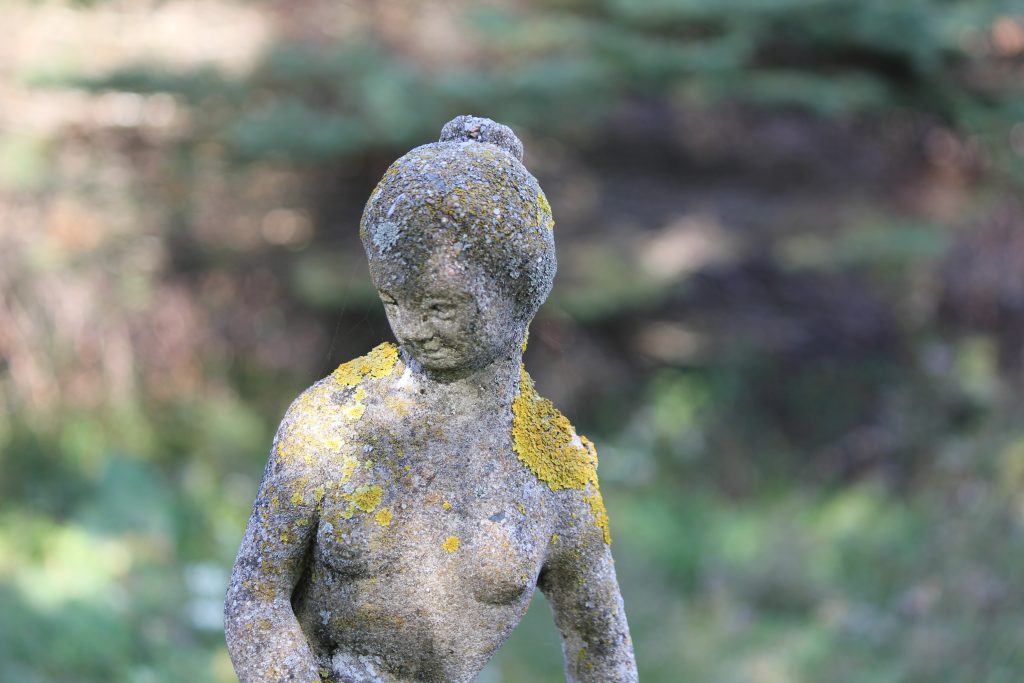It’s been nearly a year since we moved to Nova Scotia in the midst of a pandemic. It feels longer at times. At others, it feels as though we’ve always been here. The bird-bath statues seem like watchers in the yard, with their stone forms and long-lasting glances that reflect the tone of the place: a changing yard that sees all kinds of weather. There’s plenty of snow, ice, wind, rain, mist, and fog, and it feels as though winter will not end. We also have glorious days of blue sky and sunshine, but it is cold and unforgiving. Yet, the statues change too. Each holds water, and the water levels rise and fall or freeze with precipitation and attract birds year-round. In the winter the statues are covered in snowy gowns and in the fall with teasing, fluttering leaves and in the spring with warm sun. It seems that with each year, the statues’ faces lose more definition. Yes, we’ve only been here a year, but the wind and rain and ice and snow ever-so-slowly have disoriented the faces from what I can imagine them looking like when brand new, when the previous owners bought them.

I haven’t written in over a month about what’s going on out there in the meadow, because at times the snow is so deep we cannot properly walk around. The windows out back oversee everything though, and we’re surprised at the great number of birds using the yard and meadow as a a winter place to forage. They flit from tree to tree and peck at the ground for food.
Tonight the winds outside have thrown eddies of snow up into the air, over and over. The wind also audibly howls around us. We’ve been building fires on the colder days when the solar panels are covered with snow.
We have learned to embrace the winter. It’s long here. While friends and family in the states are seeing buds on trees and walking around with no jackets, we are patiently waiting through storm after storm. And we also know, once the buds come out, one of the next phenomenon, black flies, will be upon us. We’ll experience 2-4 weeks of the pesky things just as the humidity and warmth shoot up and just when all the garden work needs to be done. I’ve talked some about the trees we planted last year. We’re looking at forest gardening for this spring, which is a sustainable gardening system where tall trees, shorter trees (usually food trees/fruit trees), shrubs, and ground plants are planned to work with each other to provide a natural, re-seeded ecosystem, generally with perennial plants.
Well, we’ve already got some bigger trees planted, yet they do have a few years to mature yet! We’ve also planted some cherry and plum trees, and the yard already has mature apple and pear trees. But we’d like to put some lower fruit shrubbery and trees in not just the back but the front yard. So, on order we have pawpaws, blueberries, mulberries, strawberries, gooseberries, haskaps, and a mountain ash (or rowan) trees, along with some lilacs. So, on top of re-fitting some of the fencing around the newer trees out back–in order to save them from deer eating their bark and leaves–we’ll have plenty of new trees to plant this spring, with more fencing. And a lot of garden work to do. We also need to build a new fence around our garden.